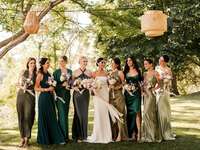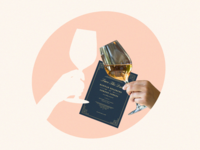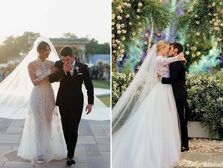Here's Everything to Know About Wedding Party Roles
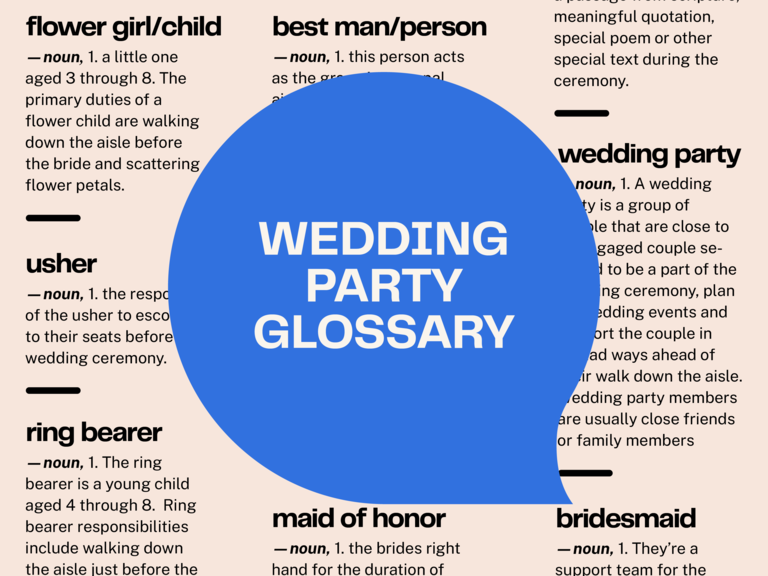
You've picked your person, now it's time to round up your people. Forming a wedding party is a wonderful way to include loved ones in your nuptials (and the prewedding festive fun), acknowledging their support and significance in your life. Maybe you're familiar with the different wedding party roles, or perhaps you're starting from scratch and need a breakdown of what wedding attendants are and which roles in the wedding are considered part of the wedding party. Either way, we've assembled a guide on the major wedding-party players to clarify exactly who does what. Ready to assemble your "I do" crew? Read on.
In this article: Wedding Party Definition | Roles | Responsibilities | Family Member Roles | Optional Roles
What's a Wedding Party?
A wedding party is a group of people that are close to an engaged couple selected to be a part of the wedding ceremony, plan prewedding events and support the couple in myriad ways ahead of their walk down the aisle. Wedding party members are usually close friends or family members of the couple, with some roles designated for young children. There can be as many or as few wedding party roles as you'd like.
Wedding Party Roles
The bridal party list primarily consists of the honor attendants (best man and maid of honor), the attendants (bridesmaids and groomsmen) and junior attendants (junior bridesmaids and junior groomsmen, if the couple chooses to include them. The flower girl and ring bearer are also members of the wedding party, though they have vastly different duties than the adult members. Keep in mind that most roles can be played by all genders and by as many people as you want. Feel empowered to update the titles of each wedding party role to best reflect the loved one filling it as well. And to take gender out of the equation altogether, you can simply use the terms "honor attendant" and "attendant" to reference your wedding party members.

Maid/Matron/Man/Person of Honor
The maid of honor is the bride's right hand for the duration of the planning process. This person supplies a second pair of eyes and provides emotional support as needed. In general, the maid of honor's duties include: heading up the wedding shower and handling numerous wedding-day tasks (like toasting the newlyweds, signing the marriage license, adjusting the bride's train at the altar and holding her bouquet during the vows). The maid of honor also helps the bride get dressed and is the last attendant to walk down the aisle before the bride enters, traditionally holding the groom's wedding ring. They also usually give a speech during the reception. A maid of honor is unmarried, while a matron of honor has tied the knot. A bride can have a maid of honor, a matron of honor or both. The matron or maid of honor and best man (below) can also be referred to as "honor attendants."
Best Man/Woman/Person
This person acts as the groom's personal aide and advisor through all stages of wedding planning. They're a fashion consultant, bach-party master of ceremonies and commander-in-chief of the groom's attendants. Best-man duties include (but aren't limited to): getting the groom to the ceremony on time, giving the wedding officiant their fee after the ceremony, signing the couple's marriage license and holding the bride's wedding ring at the altar. They'll also be responsible for a reception toast as well as keeping the dance party going throughout the reception.
Bridesmaids/Bridesmaid/Bridespeople
Bridesmaids are the trustworthy pals and family members that fall on the bride's side of the wedding party attendants. They're a support team for the maid of honor and their bridesmaid responsibilities entail helping the MOH and the bride with prewedding tasks when asked (addressing invites, making shower favors, planning the bach party and more). Bridesmaids are often expected to keep the dance floor running and play cohost to guests.
Groomsmen/Groomswomen/Groomspeople
Groomsmen are a posse of family and friends who assist the groom in planning and preparing for the big day. Like bridesmaids, they can also help with wedding-planning tasks that fall on the groom's docket, if asked. Though, the most common groomsmen responsibilities are to assist the best man as they plan (and pay for) the bach party and also to support the groom emotionally. It's also common to have groomsmen do double duty as ushers, leaving their posts in time to process down the aisle with the rest of the bridal party. Traditionally, they also get to decorate the getaway car and act as a resource for confused wedding guests.
Junior Attendants
These are young members of the wedding party (aged 9 to 16). They'll attend all major functions (excluding the bach parties) and fulfill the same responsibilities as senior squad members in terms of set-up and support. Though, they will not be expected to financially contribute to any of the prewedding events. Junior bridesmaids can wear more age appropriate versions of the bridesmaid dresses, or a style and color dress all their own, and junior groomsmen may sport a tux or suit.
Flower Girl/Child
A flower child is usually a little one aged 3 through 8. The primary duties of a flower child are walking down the aisle before the bride and scattering flower petals from a basket (or carrying a pomander). Children or even a favorite pet decked out in a flower collar can fill this role. Most flower children sit with their parents after their walk down the aisle.
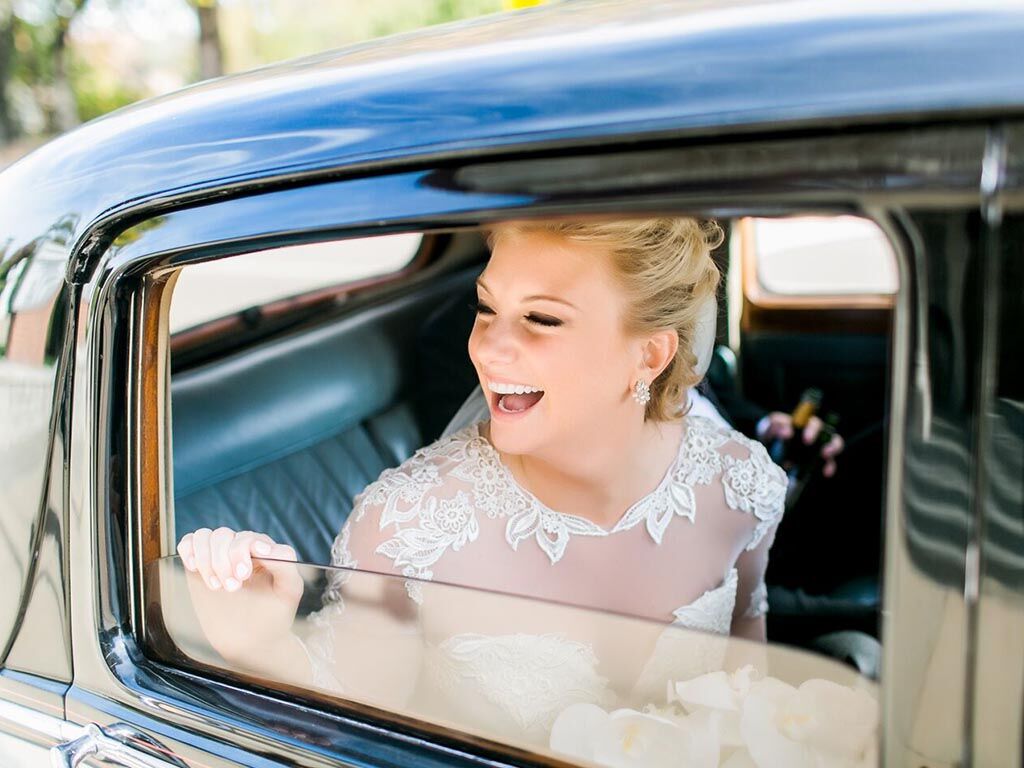
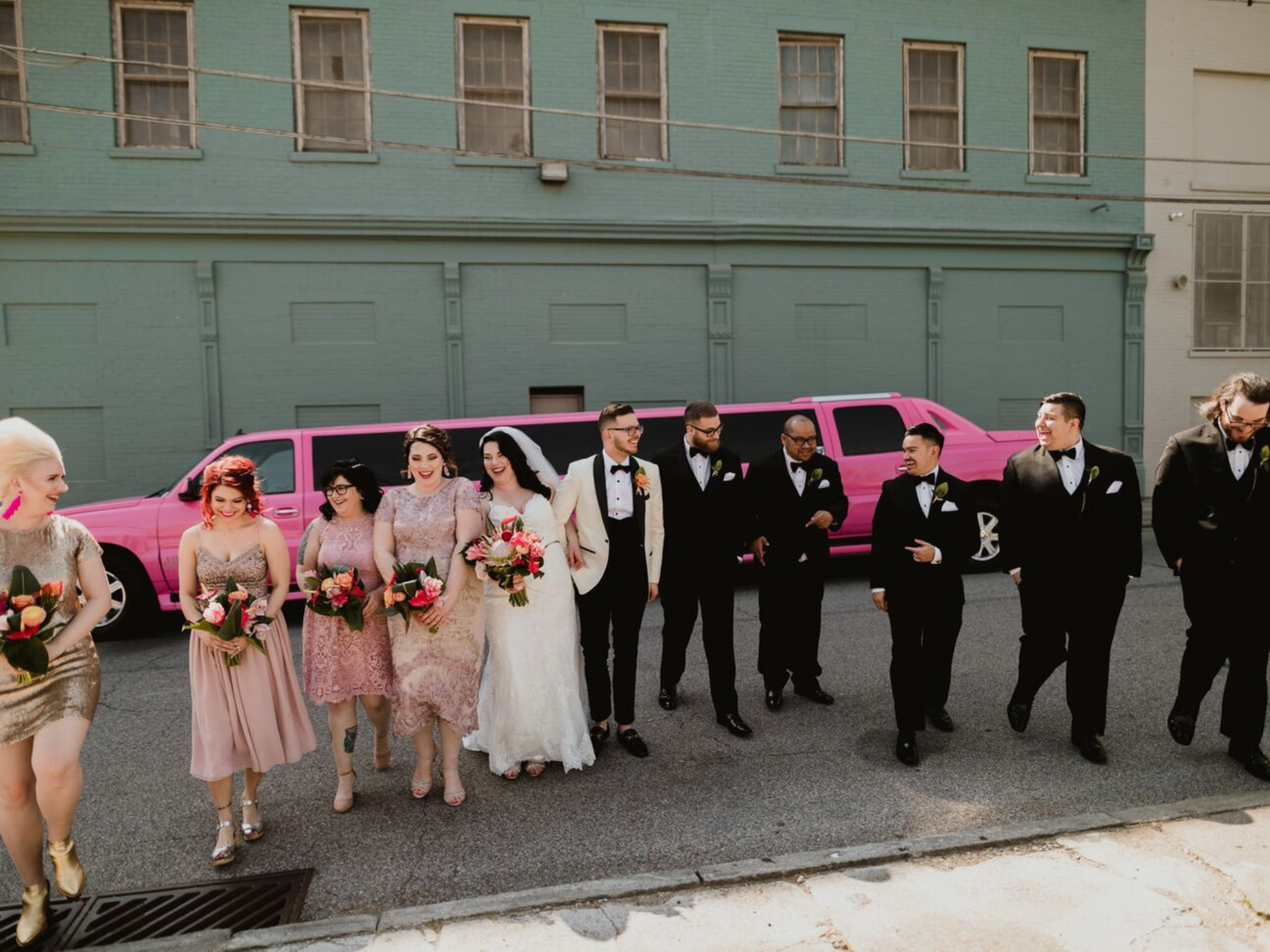

Ring Bearer
The ring bearer is a young child aged 4 through 8. Ring bearer responsibilities include walking down the aisle just before the flower girl (if there is one), carrying a small decorative pillow with two wedding bands tied to it (usually fakes, in case they got lost).
Wedding Party Responsibilities
We've discussed the duties that accompany each of the most common wedding party titles (which you can always change based on your individual preferences). Now, we'll dive into what a wedding party does as a whole. Considering these bullets is a great exercise if you're on the fence about having a wedding party at all—see how one might make things go more smoothly. Wedding party members:
- Help with many different aspects of the wedding planning process. The people who make up your wedding party may help a couple choose vendors, pick out wedding attire, mail out invites, assemble favors and be down for any heart-to-heart chats that might arise.
- Take point on planning and hosting many of the events surrounding the wedding, including the engagement party, showers and bach parties.
- Assist the couple as they get dressed and emotionally ready on the day of the wedding.
- Wear special or matching attire. They may match each other or wear wedding colors. Usually, the wedding party members are dressed formally, even if the dress code is semi-formal or even casual.
- Take portraits with the couple after the ceremony. The couple will likely ask for different configurations of wedding party members for family-and-friend pictures.
- Sit near the couple during the reception. They may sit at a large table with the newlyweds or at the closest tables to them
- Offer moral support for the couple during the wedding planning process and during the wedding itself. They help the couple work through any nerves or big emotions that pop up and provide lots of love and encouragement.
Family Member Wedding Roles
Sometimes, immediate family members like siblings are a part of the official wedding party (often as honor attendants). Though they aren't official wedding party members, the parents of the couple usually hold the same VIP status and provide similar planning and emotional support to the couple as the wedding party does. Here's a breakdown of what they do:
Fathers of the Bride and Groom
Traditionally, in the case where the bride's parents' paying for the bulk of the wedding, the father of the bride fronts most of the budget (and dances with his daughter at the reception). But now, both dads have picked up additional fatherly wedding to-dos along the way. Responsibilities for the dads might include airport duty, coordinating maps/directions to the wedding site, moving tables, escorting guests, scouting potential wedding reception venues, doling out tips to wedding day staff and a variety of toasting and hosting tasks.
Mothers of the Bride and Groom
The mother of the bride's duties may include serving as wedding planner, guest-list moderator, traditional reception host and therapist. Other possible duties include researching family and ethnic wedding traditions, attending the wedding shower (maybe even hosting it) and rehearsal dinner, and dancing the night away at the wedding reception. The nature of the bride's mother's role is entirely up to the bride. The groom's mom's duties include much of the same. She doles out to-dos diplomatically to prevent conflicts. She attends the bridal shower and is escorted down the aisle during the prelude. Her shining moment? The mother/son dance.
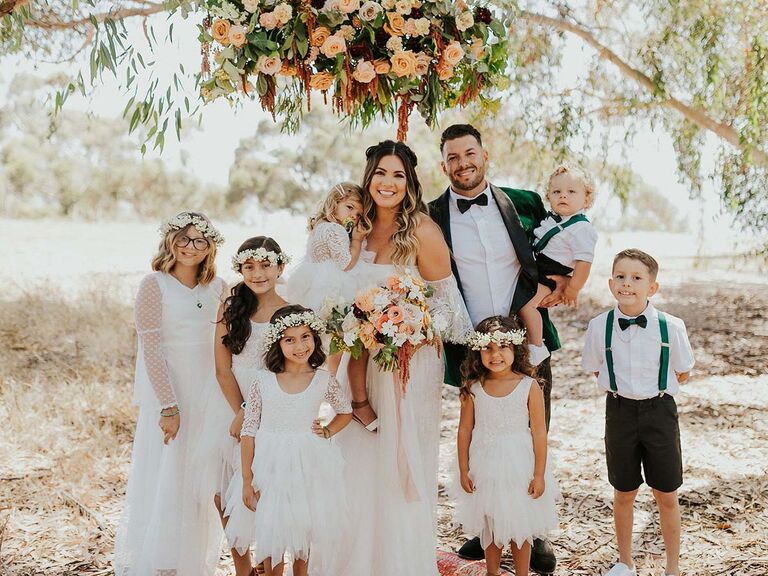
Optional Additional Wedding Party Roles
You can have as many wedding attendants as you'd like, but not everyone might be a fit for such a front-and-center role. Here are a few more additional wedding ceremony roles that aren't part of the core wedding party to make friends, sibling-in-laws or family members who aren't attendants feel included.
Usher
Ushers are technically members of the wedding house party, which is an extension of the central wedding party. It's the responsibility of the usher to escort guests to their seats before the wedding ceremony. Ushers are often close friends or family members, including preteen relatives who may not have been up for all of the attendant duties. These folks will be called out in your program and could be given corsages or boutonnieres to wear to signify their status.
Reader
Readers recite a passage from scripture, meaningful quotation, special poem or other special text during the ceremony. This is a great bridesmaid or attendant alternative for cherished friends.
Candlelighters
In some Christian ceremonies, preteens aged 9 to 12 (or even adults) light candles at the altar just before the mother of the bride is seated. Candlelighters may dress like the wedding party or not—your choice.
Pages
Pages are young kids aged 6 through 9 who carry the bride's extra-long wedding gown train (think: Lady Di's dress) as she walks down the aisle. They're also known as "train bearers."
Chuppah Carriers
In Jewish weddings, individuals that are near and dear to the to-be-weds (usually family members or close friends) may hold up the chuppah poles during the ceremony. They're often part of the shushavim (see below).
Shushavim
This is a Jewish term that describes anyone close to the couple who helps them plan and prepare for marriage. In many Jewish weddings, there's no traditional wedding party, but certain members of the shushavim (a mom, sister, best friend) might perform similar tasks.
Koumbaro/Koumbara
The koumbaro is the Eastern Orthodox groom's best man. (The koumbara is the female version.) Traditionally, the koumbaros was the groom's godfather, but today any close male relative or friend can do the job. In traditional Greek weddings, the koumbaro's role is highly symbolic, and his duties are many. For example, during the crowning ceremony, he must place the crowns on the bride's and groom's heads, then switch the crowns back and forth three times, uniting and binding the two lovebirds.
Hattabin
A Muslim term for male family or friends who help prepare the groom for and participate in the wedding. Among Moroccan Muslims, it's common for the hattabin to propose to the bride on the groom's behalf.
Vratimi
Basically, they're Greek groomsmen. In traditional Eastern Orthodox weddings, the vratimi is a pack of the groom's male friends who help the koumbaro carry out his traditional role and perform various rituals.





